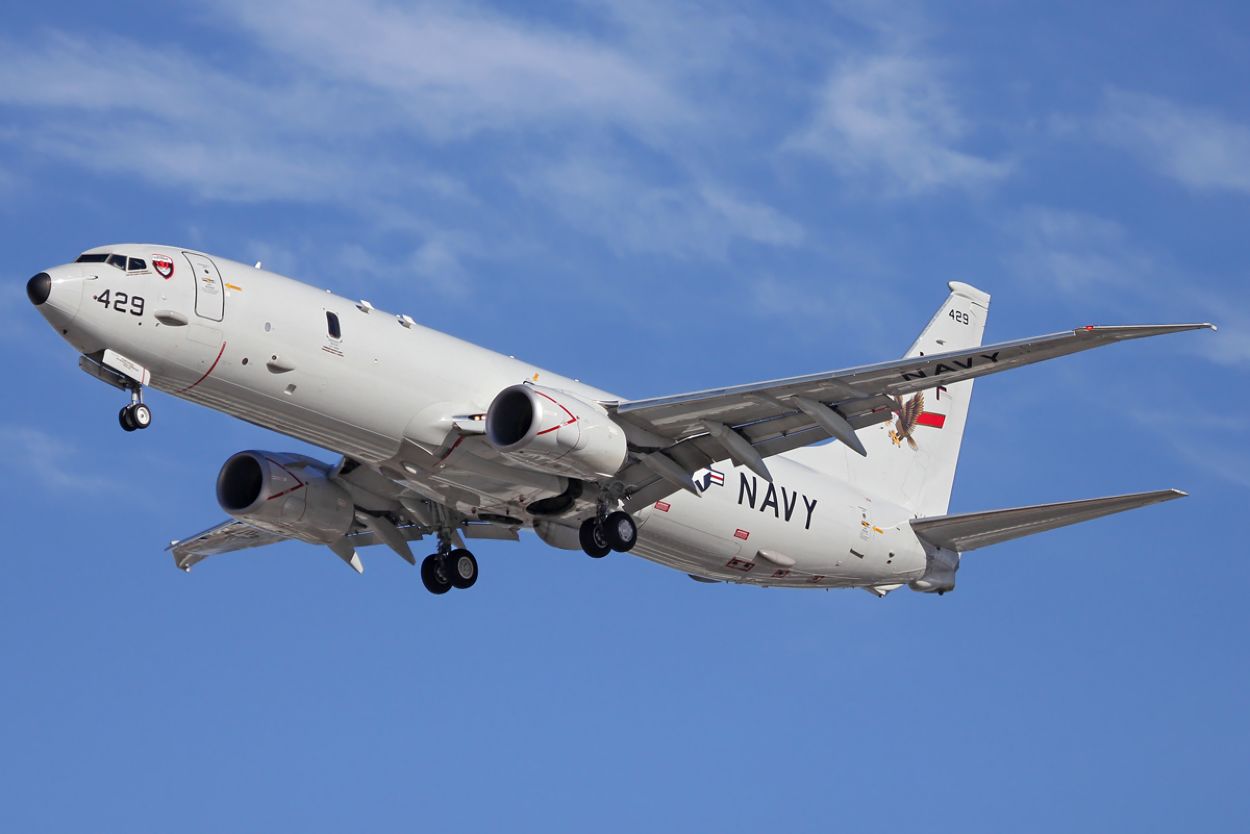A swarm of Ukrainian kamikaze drones attacked and sank a Russian missile warship Ivanovets, belonging to its Black Sea Fleet. The missiles capsized the warship along with the 44 crew members aboard. It is speculated that the US P-8A Poseidon might have aided the Ukrainian forces in the mission.
The Russian warship has carried out several missile attacks against Ukraine. Its destruction will give a breather to the denizens of southern Ukraine.
On February 1, the Armed Forces of Ukraine struck the Russian Black Sea Fleet with the help of a fleet of naval drones on Lake Donuzlav in Crimea. One of the UAVs managed to go past the ship’s defense systems and struck at its portside, resulting in a huge explosion.
The footage released by Ukrainians rules out any chance that the Russian warship survived the impact. At the end of the recording, one can see the rear part of the vessel as it sank along with the 44 Russian sailors on board.
The credit has been claimed by the special unit “Group 13” of the Ukrainian Military Intelligence. The unit has launched as many as nine drones from the Black Sea port of Odesa.
⚡️🇺🇦Ukrainian naval kamikaze drone destroyed/damaged 🇷🇺Russian missile boat "Ivanovets". pic.twitter.com/Mh2PZgKTB7
— 🇺🇦Ukrainian Front (@front_ukrainian) February 1, 2024
At the time of the Ukrainian attack on the Russian warship, an American Boeing P-8A Poseidon aircraft was airborne over the western part of the Black Sea.
Media reports suggest that the aircraft was monitoring the movement of the Russian warships in the Black Sea. It is plausible that the intelligence gathered by Poseidon helped execute the attack in a copybook style.
Reports also point out that every time Russians lose a ship since the invasion of Ukraine, a Poseidon aircraft or an MQ-9 Reaper has been in the air.
The Russian Ministry of Defense has not confirmed the attack. However, several military channels on Telegram have confirmed the Ukrainian reports.
“Due to several direct hits to the hull, the Russian ship was damaged and became incapable of further movement – the Ivanovets tilted to the stern and sank,” said the Military Informant Telegram channel. “Even after three hits on the ship, you can see how rounds are being fired at the naval drone.”
Ivanovets missile boats are part of the 1241 ‘Molnia’ project. Launched in 1989, the warship is equipped with R-270 ‘Moskit’ anti-ship missiles with a launch range of 90-120 kilometers. It is said to be one of the two missile boats still in active service in the Russian Black Sea Fleet.
P-8 A Poseidon Coming to Aid
On April 13, 2022, the Russian cruiser Moskva was hit by Ukrainian Neptune missiles. Initially, Russians said that the Moskva sank while being towed amid a storm as its hull was damaged following the detonation of ammunition on board. Later, they confirmed the warship capsized following hostile action.
However, according to information published by the Daily Mail on April 20, 2022, the US Navy sent a P-8 Poseidon maritime patrol aircraft to assist in the Ukrainian strikes. According to The Times, a P-8 was tracking Moskva in the hours before it was attacked before supplying its location to the Ukrainian military.
In a battle, situational awareness is critical, and P-8 has become the eye of the Ukrainian forces. Moskva was positioned far from Ukrainian radars. The maritime patrol aircraft reportedly detected and tracked the target and reported its position to the Ukrainian forces.
During this mission, the P-8A took off from Italy and turned off its trackers so it could no longer be followed online before reaching the Black Sea coastline. It remained hidden for three hours before reappearing on Flight Radar 24.
It then took up station on the Romanian Black Sea coast. From there, it tried to locate the position of the Russian Black Sea fleet.
The US has not officially acknowledged its role in the strikes. But it is no secret that since the beginning of the war, a range of NATO surveillance platforms and drones have been keeping an eye on Russian movements from the Polish coast, along the Ukrainian border, and down to the Black Sea.
The Boeing P-8 Poseidon is an American maritime patrol aircraft. Poseidon, named for the Greek god of the sea, is a modified Boeing-737 transport equipped with sensitive radar, cameras, and expendable sonar buoys for tracking submarines. It also includes a host of weapons, from cruise missiles to depth charges for destroying them.

The P-8 can carry out multiple missions like anti-submarine warfare (ASW), anti-surface warfare (ASUW), and shipping interdiction roles. It is armed with torpedoes, Harpoon anti-ship missiles, and other weapons, can drop and monitor sonobuoys, and can operate in conjunction with other assets, including the Northrop Grumman MQ-4C Triton maritime surveillance unmanned aerial vehicle (UAV).
The aircraft can be armed with torpedoes, all-weather Harpoon anti-ship missiles, and other weapons.
In 2023, a Russian MiG-31 fighter jet was scrambled when its air defense radars picked up a US P-8A aircraft approaching the country’s border. However, the American aircraft made a U-turn without breaching the Russian border.
On January 31, 2024, according to a TASS report, spy planes from the UK, Italy, and the US were flying near Crimea two hours before an air attack on the peninsula.
Quoting data from Flight Radar 24, the report said that two hours before the air alert, a US Navy P-8A, UK Air Force RC-135W Rivet Joint electronic reconnaissance aircraft, and E-550A (based on Gulfstream G550) long-range radar detection aircraft of the Italian Air Force flew over Romania near the Black Sea coast. A little earlier, a US RQ-4B Global Hawk strategic reconnaissance drone was spotted in the area.
- Ritu Sharma has been a journalist for over a decade, writing on defense, foreign affairs, and nuclear technology.
- She can be reached at ritu.sharma (at) mail.com
- Follow EurAsian Times on Google News




